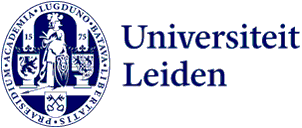
The parallels between quarrelling animals and humans
The journal Philosophical Transactions of the Royal Society – Biological Sciences published its theme issue ‘Conflict across taxa’ on 4 April, which was edited by Professor of Social and Organisational Psychology Carsten de Dreu. Together with researchers from other disciplines he provides more insight into group conflict in humans and various animal species.
He’d been playing with the idea for the theme issue for some time, says De Dreu. For years, this Spinoza winner has been studying how and why conflicts arise between groups. ‘When I talked to researchers from other disciplines, I often saw parallels. Stockholm biologist Zegni Triki observed mechanisms in fish that work together to keep predators at bay that are comparable to what we see in humans. We came up with this theme issue together, with the message that group conflicts are not limited to humans alone. They are seen in lots of different animal species.’
Cuddle hormone causes aggression
In a research article in the journal, De Dreu describes a model of how conflict arises in humans and animals. ‘When a quarrel develops with another group, it often has more to do with what is going on within your own group than what is going on in the other group. Social behaviour, like monkeys grooming each other, is controlled by, among other things, hormones such as the cuddle hormone oxytocin, which causes individuals to bond. Our research from 2010 shows that oxytocin also has a more negative side: it can evoke aggression toward other groups. So this behaviour comes from wanting to protect your own group.’ These basic biological systems do not only occur in humans, De Dreu continues. ‘They have now also been demonstrated in rodents and fish, for example.’
Conflicts due to climate change
Change and unpredictability in the environment, such as climate change, can also provoke conflict between people. This can also be seen in animal species such as certain monkeys and ants. Climate change makes everything scarcer, De Dreu continues. ‘There is less space and less food, which makes conflicts with other groups more likely. The social debate is now all about reducing carbon dioxide emissions and raising the dikes. That is extremely important, but we must also look at how to maintain food production, for example. Conflicts are terrible, so if you can prevent them, you should definitely try to do so.’

What De Dreu learned as editor of the journal was that he had to work with people ‘on the other side of the fence’. ‘Looking outside your own field of expertise is not always easy. You sometimes speak a completely different language and use different methods. But it is enormously useful. You discover that people in other disciplines may be working on exactly the same thing. They’re sometimes not as far and sometimes much further ahead and you can learn from them. Such cross-pollination is very inspiring.’
Text: Carin Röst
Banner photo: Unsplash
